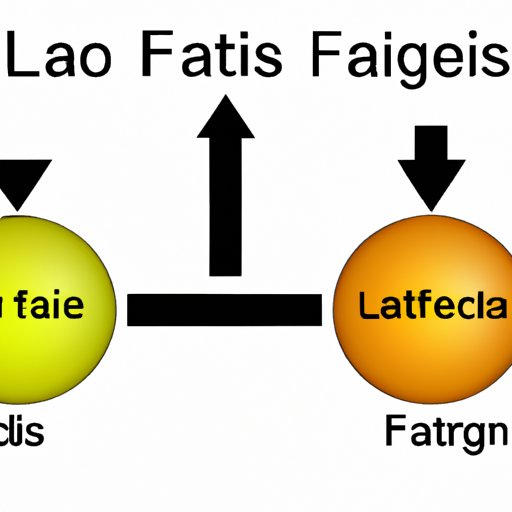
Introduction
Many people struggle with losing weight, often attempting various methods to achieve their desired results. However, what happens to our fat when we lose it remains a mystery to most of us. The purpose of this article is to explain the science behind what happens to fat during weight loss and where it goes.
Unpacking the Science: Where Does Fat Go When You Lose Weight?
There is a common misconception that fat is converted into energy or muscle. However, fat cannot be transformed into either. The chemical formula for fat is C55H104O6 (s), which cannot be converted into a different substance simply by exercising or eating differently. Instead, the process of oxidation plays a crucial role in weight loss. When oxygen is present, fat is broken down into carbon dioxide (CO2) and water (H2O) through oxidation.
Studies have found that fat is primarily exhaled from the body through respiration. In fact, 84% of the fat we lose is exhaled through carbon dioxide while the remaining 16% is converted to water. This means that, in order to lose weight, we need to increase the amount of oxygen we breathe in while maintaining a calorie deficit.
The Mystery of Fat: Understanding Its Fate During Weight Loss
Fat is stored in fat cells known as adipocytes, which expand or shrink depending on our body’s requirements. Its function is to store energy to be used by the body when other sources of energy are depleted. When our body needs energy, it releases enzymes that break down the fat into glycerol and fatty acids through a process known as lipolysis. The glycerol is then converted into glucose while the fatty acids are oxidized in the body to produce energy in the form of ATP.
There are two processes that contribute to weight loss: lipolysis and oxidation. Lipolysis is the process by which fat is broken down into its component parts, while oxidation is the process by which the broken-down product is used to generate energy. It is important to note that fat cannot turn into muscle as they are entirely different types of tissues. Muscle is made up of protein, while fat is made up of adipose tissue.
Breaking Down the Chemistry of Losing Fat: Discovering Its Disappearance
The process of losing fat involves a complex interplay of enzymes and biochemical reactions. Enzymes help to break down fats into their component parts, which are then used to produce energy in the body. Lipids are broken down by enzymes known as lipases, which break them down into glycerol and fatty acids. These products are then transported to different parts of the body, where they are used to produce energy through the process of oxidation.
Studies have also shown that we lose more weight through exhaling than sweating. In fact, around 84% of the fat we lose is exhaled through our breath, while 15% is excreted through sweat, urine or other bodily fluids. The remaining 1% is lost through heat production in the body.
The Magic Behind Losing Weight: Tracing the Journey of Fat in the Body
The process of losing fat involves several steps, beginning with the release of enzymes that break down the fat into glycerol and fatty acids through lipolysis. These components are transported through the bloodstream to different parts of the body, where they are converted into glucose or oxidized to produce energy in the form of ATP. The carbon dioxide and water produced during the oxidation process are then transported back to the lungs and excreted through respiration.
A simplified diagram of this process is shown below:

From Scale to Science: How Fat Leaves the Body When You Shed Pounds
Caloric balance is a central concept in weight loss. This refers to the balance between the calories we consume and the calories we burn. When we create a calorie deficit by consuming fewer calories than we burn, our body is forced to use stored fat as an energy source. While fat can be eliminated from the body through exhalation and sweating, it is important to note that it cannot be targeted in specific areas of the body.
To enhance the fat-burning process, there are several things you can do. Exercise is an effective way to burn excess fat, as it increases the amount of oxygen you breathe in, thereby promoting oxidation. Eating a diet rich in protein, fiber, and healthy fats can also help boost your metabolism and promote fat loss. Additionally, avoiding sugary and processed foods and getting enough sleep can help facilitate weight loss.
Conclusion
In conclusion, it is essential to understand what happens to fat when we lose weight. While fat cannot be converted into energy or muscle, it can be broken down through oxidation. This process involves the release of enzymes that break down fat into glycerol and fatty acids, which are then used to produce energy in the body. The end-products of this process are carbon dioxide and water, which are exhaled from the body through the lungs. By maintaining a calorie deficit, increasing oxygen intake, and following a healthy lifestyle, you can enhance your body’s natural fat-burning process and achieve your weight loss goals.





